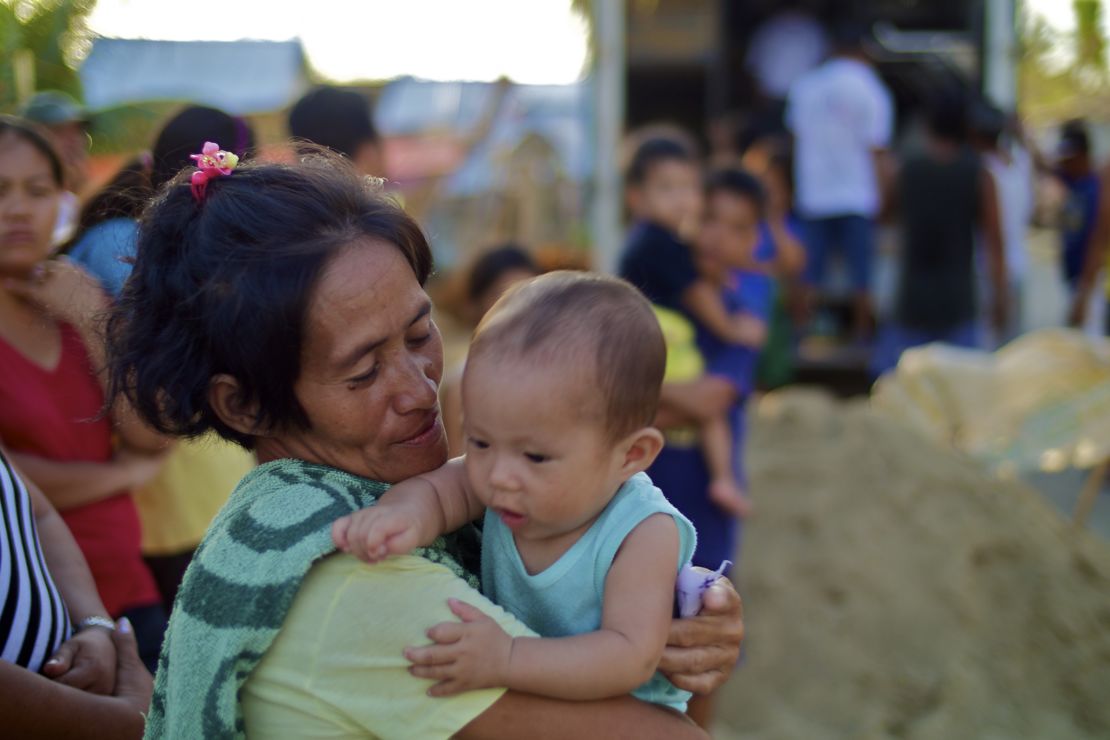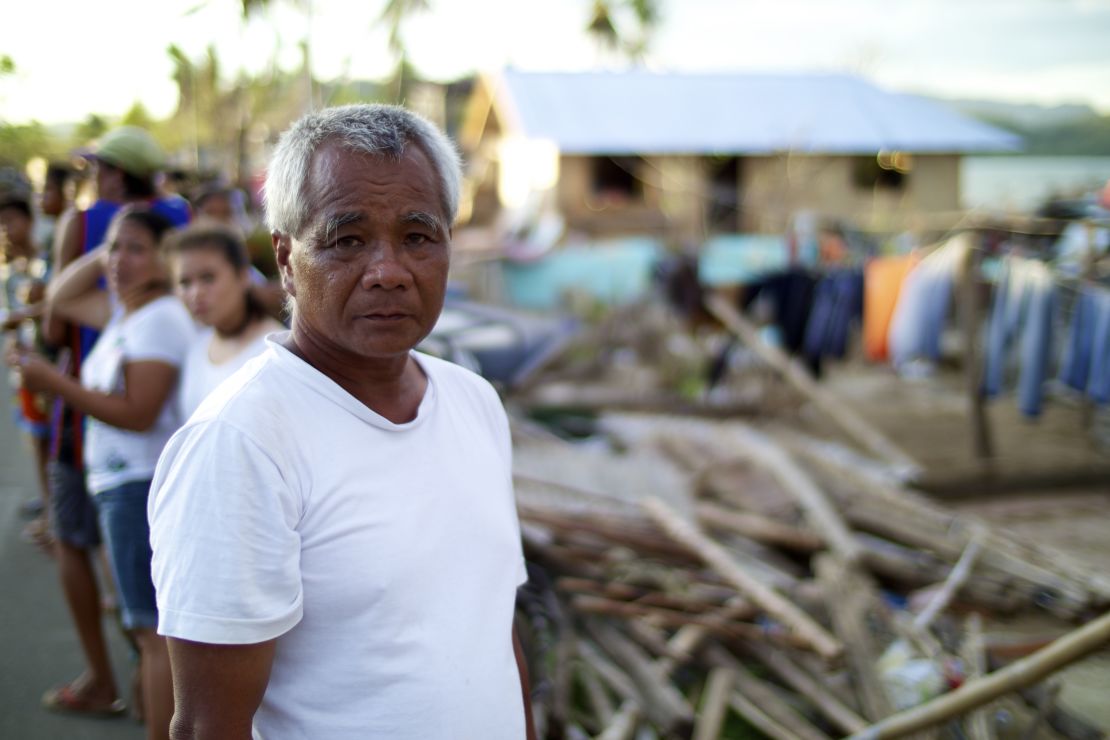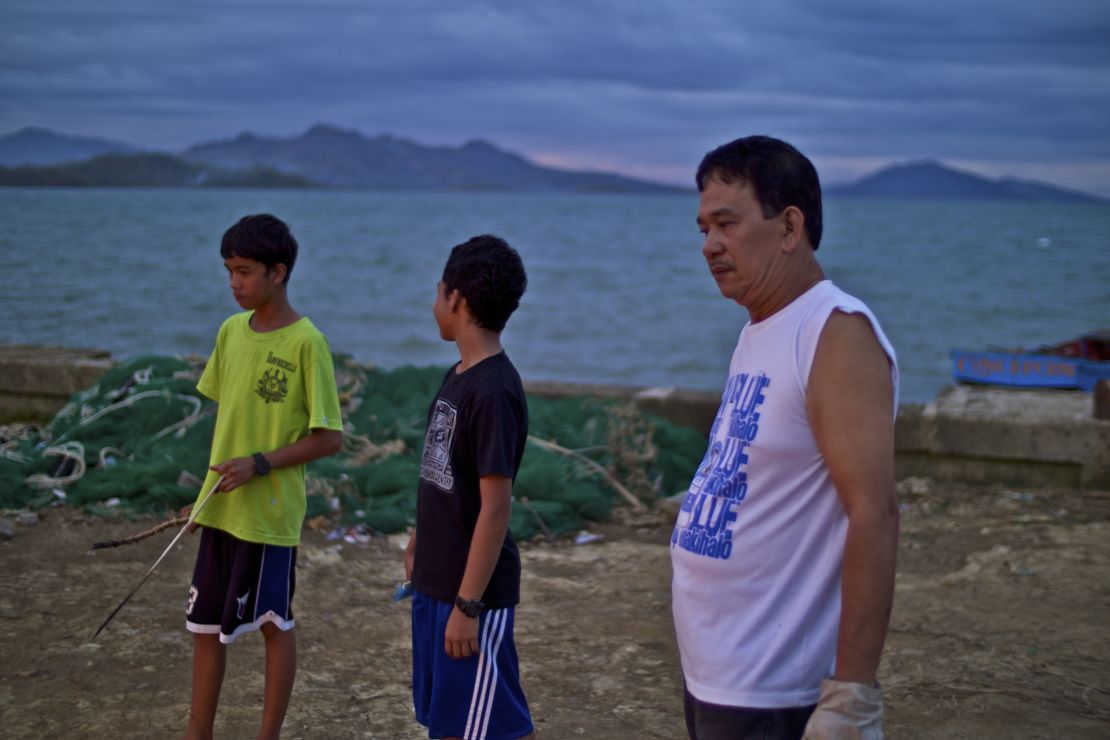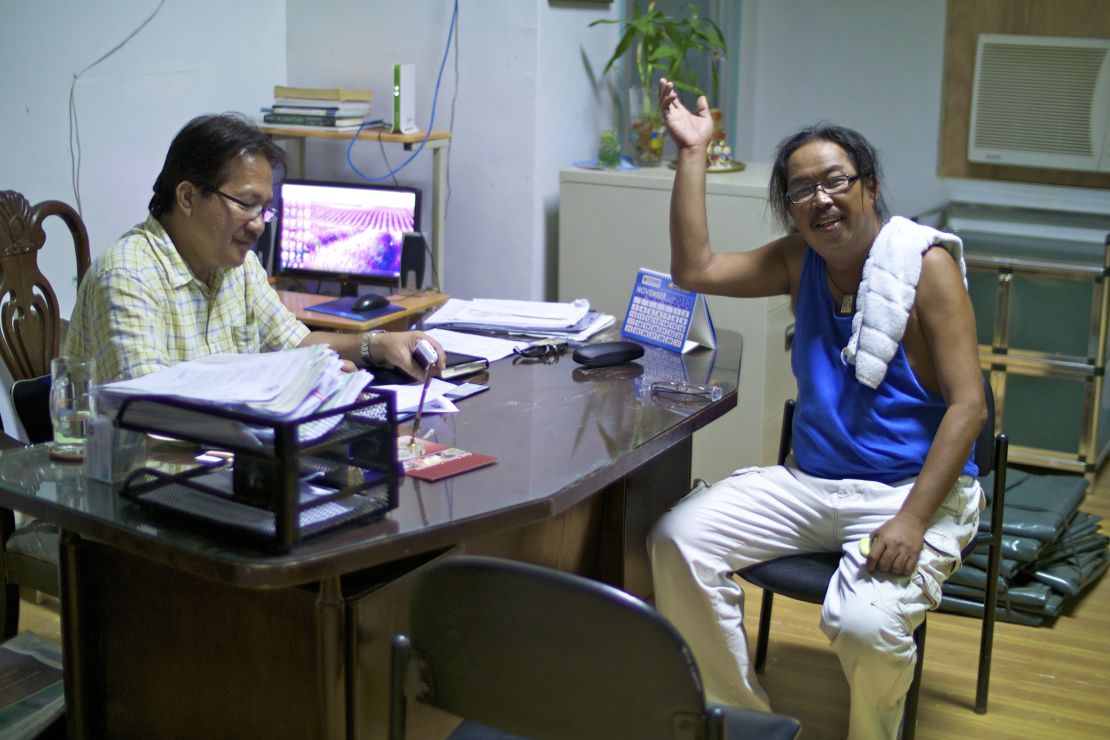Editor’s Note: Kieran McConville is a communications consultant for Concern Worldwide and documents the organization’s emergency response and development work in Africa, Asia, the Middle East and the Caribbean. Seven days after Typhoon Haiyan hit the Philippines, he was on the ground and stayed for two weeks. Here’s an account of some of the people he met.
Story highlights
Typhoon Haiyan struck the Philippines on November 8, 2013
Death toll tops 6,000, with more than 1,000 still missing
Charities continue to provide disaster relief
“Hi Kee-ran!”
From out of the crowd lining the roadside, I hear a voice calling enthusiastically. It’s Rowena and her 5-month-old baby, waiting patiently in line for the latest distribution of relief supplies to arrive in Concepcion.

Ten days ago, Rowena was the first person I met in this town, huddled by candlelight with her family of eight in a school. They had been living in the third grade classroom with two other families since November 8, when Typhoon Haiyan ripped through the Western Visayas region of the Philippines and destroyed their homes.
Unfailingly polite, always smiling, and ever courteous, she has become a symbol in my mind of the people of Concepcion and their grace under pressure.
Some unseen force has compelled me to pick up my camera and go for one last walkabout before leaving this place. Over the next hour, as the sun sets on this storm-battered coastal town, I meet many of the characters who have narrated its story and provided me with a salient lesson in dignity and resilience.
Rowena is handed a token for the distribution by a man named Johnny Franco. Grizzled and tough, he is a local councilor and president of the Fisherman’s Association. He’s also a criminologist by training and a fish processor by profession. The Philippines is a quirky country.

Earlier in the week, Johnny took us on a tour of Sitio Puntalouis, a poor fishing neighborhood clinging to a nearby stretch of coastline. He introduced us to family after family who had lost their homes and their livelihoods to the storm. But, tellingly, there was one very important fact which he failed to mention that morning – his own losses.
As I chat with him, the sun setting on the sea behind us, he laughingly gestures to a broken fishing boat lying by the roadside.
“That landed on my house,” he says. And there in front of us is the pile of concrete rubble which is all that remains of the Franco home.
Johnny, his wife and two daughters have been living under a tarpaulin and surviving on relief supplies.
“My sister is rebuilding, so we can live with her for a while. She’s married to an Australian, so they can afford it.”
Johnny’s fish-drying business has also been destroyed and, like so many other people here, he has no way to make a living. Yet he shrugs and tells me life will go on.

Smoke is drifting along the seafront and flaming bonfires of debris are being fed by a group of local people under the watchful and mischievous eye of Jun Garilva.
“This is a community effort to get on with the cleanup,” he laughs. “We’re not waiting for the municipality to do it.”
Like so many men here, he is a former seaman and has traveled the world as a bosun on container ships. Now he is the proud owner, along with his wife Bee, of the somewhat battered Jun Bee Resort hotel. On the day of the typhoon, they were forced to abandon the building when a 20-foot storm surge smashed through the ground floor, destroying all before it. They have tidied up as best they can and are playing host to various foreign and Filipino aid workers.
“I think it will take the town six months to recover from this,” he muses, serious for a moment, “but we will recover.”
Across the road, another sign of recovery: In the dying light, a group of young men are boisterously indulging in the national sporting obsession – basketball. They have cleared a space among the fallen trees, broken bamboo poles and general debris which has come to form so much of the landscape here.
“Hey Joe,” one of them calls in the ubiquitous greeting for white foreigners, which is a throwback to the U.S. military presence here during World War II. “Come and join us.” Despite the fact that I have six inches on most of them, I respectfully decline, knowing they would run rings around me.
Across the town, there is a reassuring buzz and bustle; traders manning their stalls by candlelight, a preacher calling to the world through a battery-powered sound system, and light pouring from the local church. Inside, a group of people gather to say the rosary and share each other’s company. This is a deeply religious country, predominantly catholic.

Father Tujaha is away in the city of Iloilo tonight. Yesterday he told me he had secured funding from a religious order to help rebuild 10 fishing boats and was hoping to get funding for 10 more. His main mission though, is to find a way to rebuild the elementary school next door.
“We will succeed,” he says, smiling.

On the other side of the square, the hum of a generator comes from behind the municipal hall. Inside, I find Mayor Villanueva at his desk working on the local government response to the crisis. For the past three weeks, he and his team have been here day and night organizing, coordinating and administering.
Across from the mayor, Leo Ladaquin gives a weary wave and calls a greeting, “Hello my friend! Is there anything you need?” Leo is a farmer by profession, but has been working as a volunteer since Haiyan hit, organizing boatloads of supplies to the outlying islands.
I wave back and turn away to hide my emotion, realizing that I’m undoubtedly the least needy person in this town. And yet people who have lost everything have consistently offered me what little they have, be it coffee, spam or just a welcoming smile. And never, not once, has anybody ever asked me for anything.
Leaving the Municipal Hall, I bump into Luna, a native of Concepcion who has come back to help coordinate the civil society response. She is the one who brought us here. As she waves off a mini-bus loaded with volunteers from a church group in Iloilo, I ask her what it is that makes this place special.
“You know, I was just thinking about this last night,” she answers. “I am amazed by the bond that exists between the people here, the sense of community.”
She points to a sign which has appeared in the plaza which, roughly translated, reads “We love Concepcion and we will rebuild it.”
As I head home, “Hi Kee-ran” rings out through the darkness and I can just make out the form of Rowena and some of her family gathered around an open fire. The kids pose and joke for the camera. Their temporary classroom home has been reclaimed for lessons and they have been moved to a tent.
Still homeless. Still smiling.
